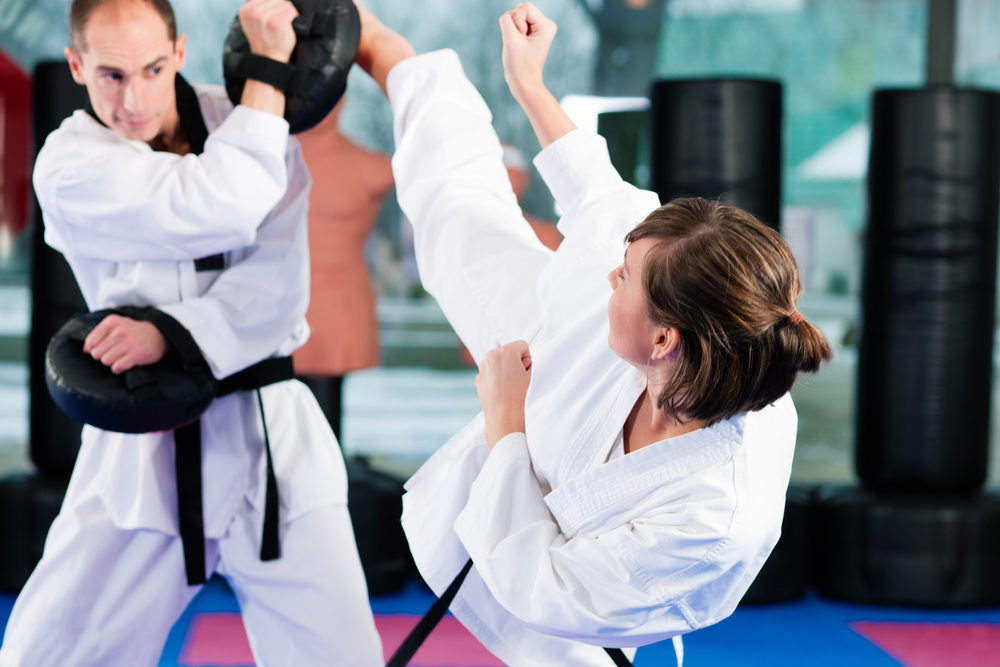Martial arts like karate and jiu-jitsu have grown in popularity — and so have injuries associated with these strenuous workouts.
The popularity of martial arts as a fitness program is expanding rapidly. According to IBIS World, the martial arts industry grew 4.2% between 2013 and 2018. And in 2017 alone, 3.42 million Americans participated in martial arts workouts.
Yet along with that increasing popularity comes injuries associated with practices such as jiu-jitsu, karate, wrestling, boxing, taekwondo, and judo. As with any strenuous exercise routine, martial arts participants should be aware of the risks and take measures to safeguard their physical wellbeing.
Common Martial Arts Injuries
Participating in martial arts provides many benefits, but also raises the risk of serious trauma. Here are three common orthopedic injuries that can strike martial arts enthusiasts.
- Back and Neck Strain. It’s common for athletes to strain their backs or necks during rigorous martial arts workouts. This can lead to pain, stiffness, and weakness. Patients who have injured their backs may also experience muscle spasms and difficulty standing up straight.
- Shoulder Tears. Martial arts often requires vigorous hand movements like striking or blocking, which can lead to shoulder injuries. A SLAP tear — a lesion or tear in the cartilage lining the socket of the joint — is one of the most common of these injuries. Martial artists may also suffer from rotator cuff tears, which affect the tendons and muscles that support the shoulder.
- ACL Tears. Among the more significant knee traumas is a torn anterior cruciate ligament (ACL). In martial arts, this serious and potentially debilitating injury is often caused by a sudden change of force or direction. When this ligament tears, patients may feel a sharp pain and hear a “popping” sound.
Preventing Martial Arts Injuries
Martial arts offers a wide-ranging workout that improves muscle strength and balance. In addition, many participants enjoy the competitive nature of practices like taekwondo and karate. However, it’s important for martial artists to protect themselves from common injuries by following these four tips.
- Know Your Fitness Level. Martial arts is a strenuous activity, and students should be in good physical shape to participate. Before starting a martial arts program, athletes should build up their cardiovascular strength with running, jumping rope, biking, and swimming. It’s also a good idea to have a thorough exam by a doctor to check for any cardiovascular or musculoskeletal issues.
- Use the Appropriate Equipment. Martial arts often requires students to wear protective gear such as gloves, mouth guards, headgear, chest protectors, safety glasses, and padding. Since much of martial arts training occurs on matted floors, participants shouldn’t work out with socks or footwear that could cause them to slip.
- Work With a Trainer. Whether they’re new to the sport or an experienced student, athletes should work with an experienced trainer who can address any flaws in technique and suggest corrections. A trainer can also demonstrate how to perform new movements to reduce the chance of injury.
- Warm Up and Cool Down. Athletes should never jump into any exercise routine without properly warming up. Simple exercises such as running or walking in place and doing jumping jacks give the muscles a chance to warm up before a vigorous martial arts workout. Afterwards, stretching the muscles keeps them flexible and reduces any soreness.
Suffering from a Martial Arts Injury?
At New York Bone & Joint Specialists, we understand that injuries happen to even the most experienced athletes. If you’ve been injured, we’ll diagnose the problem and recommend a treatment plan so you can resume your favorite sport as soon as possible. Contact us today to schedule an appointment.




